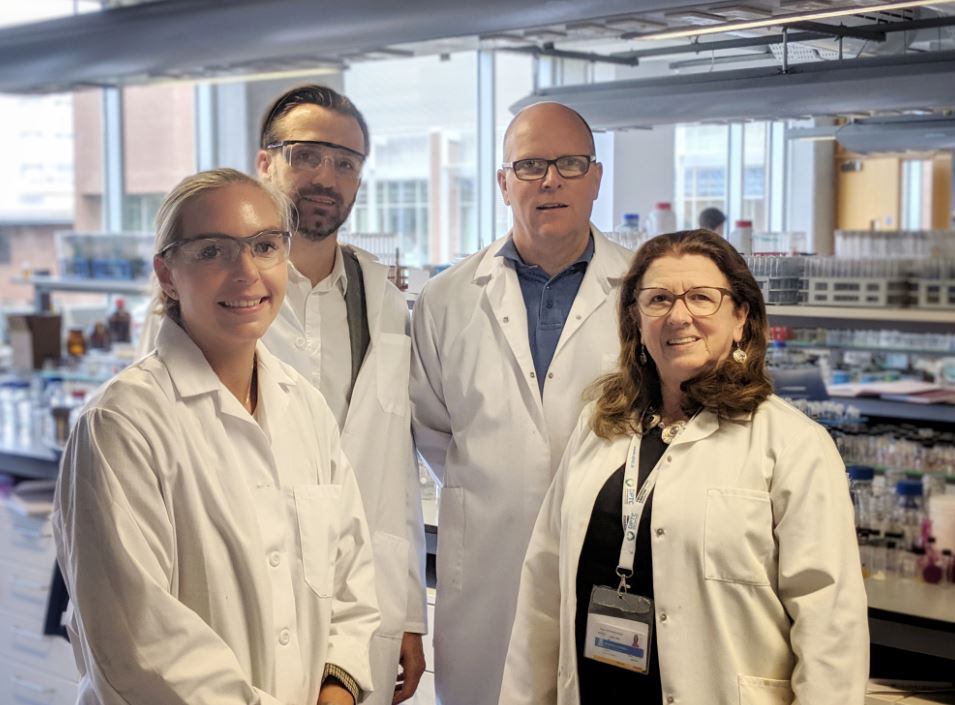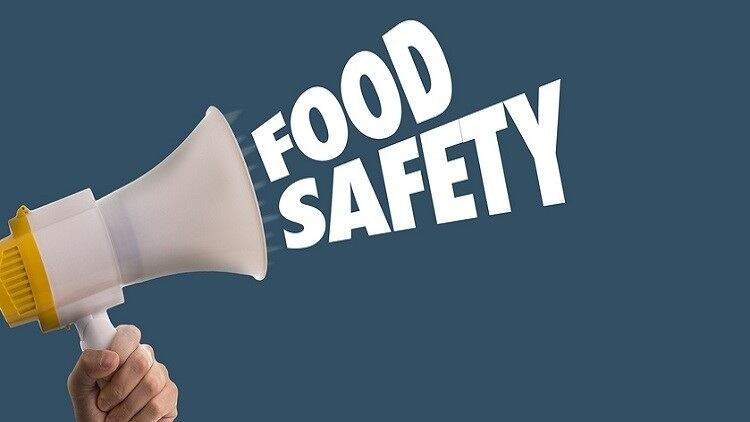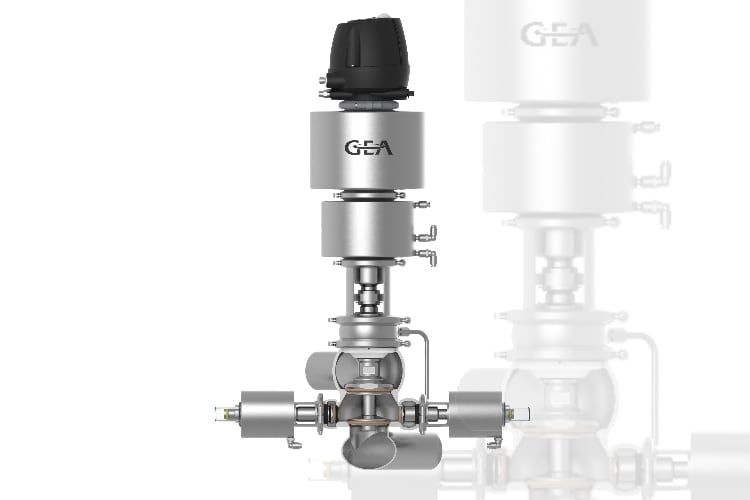However, despite the fact the food industry supports the implementation of hygienic design principles, the challenge is the time required to identify current issues, then to implement recommended changes and often a major capital investment necessary to replace or retrofit equipment to avoid such critical points or to build a facility at a new location, says Krzysztof Zacharski, research engineer, The Dairy Processing Technology Centre (DPTC), University of Limerick.
Food safety incidents

“Moreover, much of the food equipment available for food industry segments is not of appropriate hygienic design to ensure continuous cleanability, primarily due to not adequately stressed hygienic design standards,” he said.
“Many food manufactures may have a poor understanding of the relevance and impact of adequate food equipment standards. They may not fully integrate hygienic design concepts into the processing environment and are leaving themselves vulnerable to avoidable production-related food safety incidents.”
Zacharski and his team promoted their research on hygienic design and its importance at the Food Safety Authority of Ireland (FSAI) Conference, ‘The Science of Food Safety – What’s Our Future’, in Dublin last month (August 21-22 2019).
The definition of the project was: ‘As the standard of living improves, customers question the quality and safety of food they consume because healthy eating is necessary to sustain wellness and increase longevity.
‘Moreover, local food poisoning outbreaks can easily turn into global health threats due to the speed and range of product distribution.
‘Foodborne illnesses are sometimes the consequence of poor food preparation. Other times, diseases can be traced back to insufficient sanitary procedures and/or poorly designed food equipment or food facilities.
‘For example, in a major Salmonella typhimurium outbreak associated with a peanuts processing facility (CDC 2007), the results of the investigation exposed poor facility maintenance, equipment design issues and an insufficient cleaning programme. In another example, a Listeriosis outbreak in Switzerland was related to a design-inherent hygienic problem of one specific product feeding belt. Similarly, a Salmonella agona outbreak linked with the French dairy group Lactalis, started with bacterial build up of one of its drying towers (EFSA & ECDC 2018).
‘Investigation of foodborne disease outbreaks is now more viable with the advent of novel analytical methods such as whole-genome sequencing (WGS), that provides insight about pathogens that exist in the industry to trace back specific pathogen to the food processing facility where under-processing or cross-contamination occurred. In 2018, there were 110 Enforcement Orders issued by the Food Safety Authority of Ireland (FSAI), where a serious risk to public health had been identified.
‘The costs associated with trying to repair the situation don’t compare to the substantial damage to the company’s reputation and irreparable economic consequences due to food safety authority investigation product recalls, food poisoning lawsuits, court-imposed penalties and administrative fees. These fears make it especially important for food manufacturers to implement sufficient approach to hygienic design as it makes it easier to keep the equipment in a state with a low risk of contamination.
‘Consequently, the hygienic design of buildings and equipment are perquisite programmes required to be in place before the implementation of a Hazard Analysis Critical Control Point (HACCP) food safety management (FSM) system.’
External & internal hazards
Hygienic design guidelines take into account how to design, construct, and install the equipment, and associated infrastructure needed for the food storage processing and distribution.
In general, hygienic design aims to enhance control of potential external and internal hazards. External hazards include: microorganisms (pathogens), airborne particulate matter, airborne chemical taints, pests and unauthorized human access.
Internal factory hazards comprise; microorganisms from raw materials (pathogens), chemical taints, (product and cleaning residues, allergens particulate matter (glass pieces, metal fragments, flaking paint), human activities (unintentional) or deliberate.
“Our research initiated a journey to improve hygiene-oriented standards of the Irish dairy processing industry,” said Zacharski.
“The outputs from this research work provided the analytical data tools to reveal opportunities for the development and prioritization of activities to improve dairy processing and operations. This is also a solid foundation for future developments e.g., enhanced biofilm removal techniques, improved control of spore formers, and the implementation of recommended improvements in industrial settings.”
The research project was performed under the remit of the DPTC, Pillar 1, where the overall objective is to investigate ways of delivering improved efficiency and reduced costs in the processing of existing products without compromising product quality and integrity.
To achieve this, the research group gathered information on all stages of milk processing, across the partner factories within the Irish dairy processing industry.
“It allowed us to develop a solid understanding of what is the current state and to define customer quality requirements. At this stage, it was clear to us that the deterioration of milk by bacterial growth is one of the biggest challenges the dairy industry faces today,” said Zacharski.
“The level of microbial contamination and the types of bacteria present in raw milk delivered to the dairy plant can depend, often unpredictably, on a variety of factors, e.g., cow health, feed quality, environment, milking procedures and sanitary conditions at the farm and of the equipment used for milk processing and storage. Therefore, the dairy industry needs to maintain the microbial quality of raw milk delivered to the facility, as it is crucial for the production of quality dairy foods.
“After we've presented our preliminary findings and we brainstormed with industry partners, they believed a significant benefit would be to increase hygiene control on the farm, to reduce the level of microorganisms present in milk being delivered. Nevertheless, we knew that in the Irish system of milk production raw milk is cheap, therefore most smallholder farmers would be more interested in producing extra volumes of milk rather than investing in the increased quality of current volumes.
“After a lengthy discussion, we agreed the retention of milk requires ensuring the appropriate cleanliness of manufacturing systems.”
Cleanability
Researcher, Paul Hogan, analyzed the material characteristics of stainless steel used in dairy processing equipment for surface roughness, surface free energy and found that the material characteristics affect fouling and consequently subsequent cleanability.
Simultaneously, Zacharski, developed a simplified experimental model to replicate, as closely as possible, industrial practice in selected dairy processing factory, to evaluate the formation of multi-species biofilm on stainless steel surfaces being subject to conditions present during manufacturing run and post-production cleansing period.
Results showed the milk-processing environment allows substantial biofilms to develop despite CIP-induced reduction of viable cells by ↓39.1 % for Aerobic Colony Count (ACC) and by ↓56.3 % for Aerobic Thermophilic Count (ATC).
The results facilitated precipitation of underlying causes of the inevitable bio-fouling phenomenon, e.g., poor hygienic design standards and inadequate cleaning and sanitation programs.
“The first stage of the process included a face-to-face meeting with our dairy industry partners, primarily to build a positive relationship and listened to their perspectives, which entails a better understanding of the company's organizational structure and background,” added Zacharski.
“Simultaneously, a systematic literature review was used to gather information related to the products and technology used in the dairy processing industry to narrow down the list of actions that may potentially facilitate a successful project.
“At the next stage, technical inspections and discussion with managers and operators performing routine operations within the current workflow remained the most effective methods for gathering information.
“This “hands-on” approach provided contextual information required to frame further the data collection plan. Process flow diagrams (PFDs) and piping and instrumentation diagrams (P&IDs) were developed to provide an insight into a manufacturing process and allow us to visually communicate the key details of each stage of the process. The data related to the production process was collected from the company’s database to evaluate potential improvement opportunities and their impact on operational performance and manufacturing capabilities.
“Next, research findings and developed PFDs and P&IDs were presented during the brainstorming session hosted with the selected stakeholders to rationalize potential improvement initiatives and to elaborate possible routes for the implementation plan.
“Given the range of views, it was crucial to pursuit the agreed way and balance various qualitative and quantitative objectives. Therefore, it took over two years, including more than 200 on-site visits to bring the idea to life successfully. “
Cross-contamination risk
The data collected during the onsite activities exposed 120 individual nonconformities associated with the three main areas of consideration, i.e., (i) layout and segregation; (ii) building fabric; (iii) services. Some cases posed significant direct cross-contamination risk or major requirement omission.
Zacharski said the team’s recommendations for improvement, comprising CAPAs (corrective and preventive actions), were evaluated based on the risk assessment and multiple-attribute decision matrix analysis incorporated into the developed Prioritisation Support Tool (PST).
“This approach provided a quick and easy method for decision-makers for selecting and focusing on quick-win initiatives and effectively facilitated the systematic implementation of hygienic design standards,” he said.
“By this time, numerous improvements have been implemented in the inspected factory, e.g., replaced pasteurizers, advanced fat content measurement system being installed, updated cleaning procedures, serviced HAVAC system, and several pipelines have been modified to prevent the retention of residues and improve cleaning efficiency.
“Many food manufacturers struggle to find enough time or sufficient in-house expertise to detect and fix problems. There is also a gap between determining the nature of the problem and the actual implementation of the solution to fix it, and, therefore, improvement projects of all sizes have a high tendency to fail.
“The successful implementation strategy is dependent on a company’s ability to making better decisions faster. This can be achieved with an appropriate structured approach to decision making. A quick and easy method for decision-makers to facilitate any proposed implementation plan was attained by connecting the results of risk analysis and multiple-attribute decision matrix analysis to the developed Prioritisation Support Tool (PST).
“This case study showed how the proposed method was applied as a support platform for the implementation of hygienic design standards and could serve as a useful framework for both executives and operational managers on a global scale.”




